Who says badge engineering can’t work?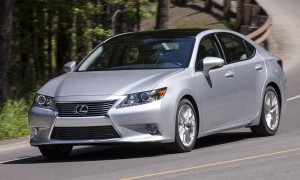
GM (and Ford, too) got heckled for years . . . for doing it wrong. For taking, say, a Chevy Cavalier, adding some chrome here, a wreath and crest there – and calling the unholy result a Cadillac Cimarron.
The problem, of course, was that the underlying car was a turd that could not be polished.
Lexus does badge-engineering right.
It based the original 1992 ES300 sedan on the mid-sized Camry – a thoroughly good car and one of Toyota’s most enduring best-sellers. No surprise, people liked the ES as much or more – proving that kinship between a bread-and-butter model and a prestige brand is not necessarily the kiss of death.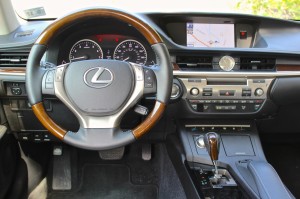
The current ES350 is still based on a Toyota – just a bigger one: The full-sized Avalon. It has four inches more more back seat legroom than the previous, Camry-based ES. A larger trunk. Almost two inches more wheelbase.
All the appealing qualities of the previous car – plus more car.
That’s the key to keeping a franchise successful for 22 years – and how you get a jump on the next 22 years.
WHAT IT IS
The ES is an icon – the car that literally set the bar for what an entry-luxury sedan should be when it was first introduced back in ’91 as a brand-new ’92 model. It delivered levels of fit, finish and overall quality – as well as features and amenities – unheard of at its price point.
The current version is the ES350 and – for the first time – it shares its platform with the full-size Toyota Avalon. It has the same wheelbase (111 inches) and comparable interior dimensions but is slightly (2.6 inches) shorter overall than its Toyota cousin.
As always, it is tuned to maximize softness in every way – a happy (because hard to find) counterpoint to the same-same “sporty” meme that’s spread like the flu across the luxury car market. There’s nothing wrong with sporty. But if you’re more interested in a soothed backside and shutting out the noise of the world outside than in countersteer drfiting through the apexes, then you will find the ES an oasis.
Your passengers, too.
Base price for the ’14 is $36,620 – with a number of options package available optionally, including an Audio package with HD radio and iTunes tagging and touchscreen interface and a Premium Package (bundled with Navigation) that adds leather seat covers and real wood trim. A full-length Panorama sunroof, power rear sunshade and ultra-premium 15-speaker Mark Levinson audio rig are among the high-end features that can be ordered.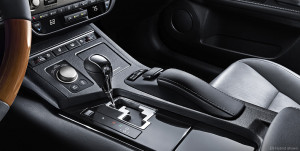
One of the very few other-than-Toyota-Lexus cars that can be directly stacked up against the ES is the Buick LaCrosse, which starts at $33,135 and tops out at $39,885.
It, too, is a smooth operator. But as nice as it is, it’s not a Lexus – and hasn’t got the Blue Chip rep – and with it, the unbeatable value-holding that has characterized Lexus’ best-sellers for decades now.
Another possibility is the Ford Fusion-based Lincoln MKZ ($36,190 to start). It’s not a bad badge-engineering job, either. But it has a much less spacious second row and its interior isn’t up to the high water mark set by the Lexus.
Or, for that matter, the Buick.
Ventilated (as well as heated) seats are now available, as is Siri Eyes Free compatibility and lighter colored bamboo wood interior accents.
All ’14 ES350s now come standard with HID headlights.
WHAT’S GOOD
The entry-luxury standard bearer.
Granitic reliability rep. High resale value.
Roomier interior – especially the backseat.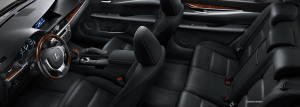
Posh doesn’t mean it’s not peppy. Quicker to 60 than its chief rival, the Buick LaCrosse.
Gas mileage of standard V-6 (21 city, 31 highway) is not much lower than gas mileage of four-cylinder “mild hybrid” LaCrosse (25 city, 36 highway) and better than LaCrosse delivers with its optional V-6 (18 city, 28 highway).
WHAT’S NOT SO GOOD
LaCrosse starts out almost $3,500 less.
LaCrosse offers AWD – the Lexus doesn’t.
Fairly low cornering threshold before stability control steps in – if you care about such things.
The ES has always come standard with a V-6 engine and the tradition continues for 2014 – notwithstanding the general trend away from larger displacement (and naturally aspirated) engines and toward fairly small “power on demand” turbocharged engines. These smaller, turbo-boosted engines are gaining popularity as a way to maintain power/performance (when wanted) while also achieving better overall economy. BMW’s new 2.0 turbo four, for instance – which is standard in the 3 Series, the 5 Series and several others – rates as high as 36 MPG on the highway (3 Series), which is a significant improvement over the formerly standard in-line six.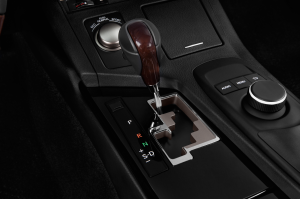
However, no one really knows how these pressure-cooker turbo engines will hold up over the long haul – after the warranty runs out. There is something to be said for an understressed bigger engine that doesn’t need to be force-fed air and fuel to maintain acceptable performance. There is without question less to potentially break and cost you money. No turbo, no intercooler.
No need to burn premium fuel, either.
The Lexus V-6, which displaces 3.5 liters and makes 268 hp, runs on regular. Its EPA rating of 21 city, 31 highway may not be quite as high as that delivered by some of the new turbo fours, but when you factor in the additional 20 or so cents per gallon extra you have to pay for premium vs. unleaded, a difference of say 5 MPG works out to almost a draw as far as what it actually costs you to operate the thing.
A six-speed automatic is the standard and only transmission available in the ES – all of which are FWD too.
The drivetrain can be adjusted three ways – Normal, Sport and Eco – via a rotary control knob on the center console. There is also a Sport mode (pull the shifter toward the left, then tap up or down) for manual control of the automatic transmission’s shift points.
An ES350 can get to 60 in 6.5 seconds – a quick time for the segment and good enough to beat the V-6 LaCrosse (6.8 seconds) although the Buick does offer buyers the option of AWD.
On the other hand, Lexus offers a full-hybrid version of the ES (the ES300h) that is technological several steps ahead of the “mild hybrid” version of the LaCrosse – as well as much more fuel-efficient: 40 city, 39 highway vs. 25 city, 36 highway.
The hybrid ES is reviewed separately; see here for more.
One of the few perks of being over the hill is perspective. I can, for example, remember a time (pre-1990s) when most luxury cars were like the ES – that is, they were luxurious rather than sporty. Light steering, giving suspensions that soaked up the bumps; deeply cushioned seats built to ease your backside – not cinch you into place for a round around the ‘Ring.
Today almost all luxury cars are sporty cars. Everyone wants to be BMW. And so the typical luxury sedan has a fairly tight-fitting cabin, with bolstered buckets and often heavy-feeling steering and a ride that’s firm and cornering grip that’s high. None of these attributes are necessarily negative. Obviously, many consider them positives – or there wouldn’t be such a market for cars like this.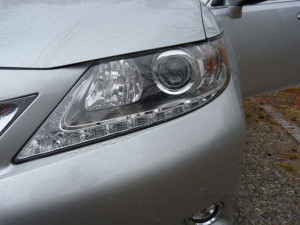
But what if you chiefly value peace and quiet? Almost effortless steering, seats you could sleep in? Stateroom silence – and separateness from the world outside?
These are the attributes you’ll enjoy in the ES – and which are no longer commonplace anywhere else. One of the very few new cars that’s comparable in demeanor is the Buick LaCrosse – which for that reason (as well as its lower price-of-entry) deserves a cross-shop.
But your buying quest will be easier than if you were out shopping for a luxury-sport sedan, of which there are literally a dozen in any given segment and (usually) only minor meaningful differences between the majority of them.
I like that Lexus has resisted another fad: The electronicized toggle shifter (or some other similar gimcrack). There is instead a blessedly straightforward mechanical handle you pull forward and back to get the range you want. If it ain’t broke don’t fix it. The others could learn something. The Lexus system is much simpler – another way of saying luxurious – than the over-the-top “inputs” increasingly common in higher-end cars.
Of a piece, the unique, hand-shaped controller for the secondary stuff (audio, GPS, etc.). There’s a palm rest to the right of the shifter with a finger toggle ahead of this. It’s ergonomically designed to avoid hand strain and is much more natural to use than the rotary knobs/mice favored by other car brands. Other small detail things that make a car more user-friendly include the location of the controls for the outside rearview mirrors. Almost always, these are awkwardly placed on the driver’s door panel, where they’re hard to manipulate while driving. In the ES, the controls are mounted on the dash, just to the left of the steering wheel – and thus, directly in line of sight and much easier to use. Also savvy, the rotary knob controllers for the driver and front seat passenger seat heaters and coolers. Left for warm, right for cool – in the middle for off. No digital sensory deprivation here.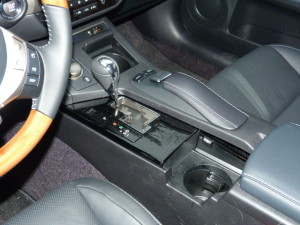
I also like the deeply recessed center stack LCD display, which isn’t frequently obscured by sun glare. And the offset cupholders on the center console. Instead of side by side – the usual layout – one’s mounted forward and toward the front seat passenger. The other is mounted opposite – and nearer to the driver. This avoids clashing cups – and spills.
The car’s only deficit is the one it’s not fair to criticize: high-speed handling. There is a lot of understeer dialed into the suspension and of course, the car (being FWD) is naturally weight biased toward the front. If you try to make it do what it’s not designed to do – “BMW” it through a corner at 20 over – the computer will tamp things down by engaging the stability control, pumping the brakes and dialing back throttle. If you want more slip n’ slide, then a rear-drive GS (or BMW) is what you want, not the easygoing ES.
The current ES is the biggest ES yet. At 192.7 inches long overall, it is actually bigger than its bigger brother in the Lexus lineup, the GS350 (190.7 inches). Lexus is among the few high-end brands that charges less for the bigger car.
Again, the emphasis is on luxury – on comfort: The back seats, for example. 40 inches of legroom. Contrast that with the price-equivalent BMW (3 Series) which has 35.1 inches. Or the Benz C-Class, which has 33.4 inches. The only real competition comes from the Buick LaCrosse, which actually has slightly more backseat legroom (40.5 inches) as well as nearly the same generous legroom up front (41.7 inches vs. 41.9 for the Lexus) and a full inch more shoulder room in the second row (56 inches vs. 55 for the ES).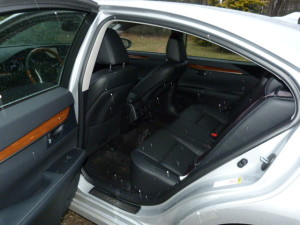
However, the Buick has one potentially fatal flaw – an undersized trunk. Though it is a full-size car (at 196.9 inches, it’s a bigger car than the ES) it has a compact-sized car’s trunk – just 13.3 cubic feet (10.8 for the “mild hybrid version) vs. 15.2 for the ES350. The Buick’s trunk opening is also smaller – and the “sill” is higher – which makes it harder to make use of the limited space you do have. The Lexus is much better in this respect.
There’s a lot of overlap on options and equipment.
Some things you can get in the Buick (collision warning vibrating seats, for instance) that you can’t in the Lexus. And vice versa (such as a full-roof Panorama sunroof, available in the ES, but not with the Buick). Both cars, it must be said, offer a wealth of amenities – especially in relation to their position as “entry level” luxury sedans. Examples include adaptive cruise control, rains sensing wipers, Lane Departure Warning, touch screen interfaces – etc.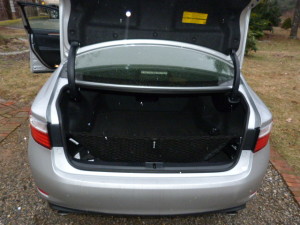
Either one fully decked out is every bit the premium (as opposed to merely “entry luxury”) car – with the chief difference between them and cars costing $20k and more being the orientation of their drive wheels. Most luxury cars are based on RWD-layouts -because RWD is associated (rightly) with sportiness – and sporty is the gravitational center of the luxury car market these days, around which everything seems to orbit. Does it make sense?
Not if the object is luxury.
The RWD layout eats up space – that hump down the centerline of the floorpan, for instance. It’s there to accommodate the driveshaft that sends the power from the engine up front to the drive axle out back. In a FWD layout like the ES (and the LaCrosse) there’s more room for your legs.
I mentioned earlier that the Buick starts out less – but keep in mind the base LaCrosse does not come standard with the V-6, which is almost a necessary upgrade in view of the “mild hybrid” LaCrosse’s Corolla-esque acceleration (0-60 takes almost 10 seconds). GM also sells the LaCrosse in the usual way – a base trim, a mid-trim, a top-of-the-line trim. The ES comes in one trim with most of the majors already included and only a relative handful of options packages as possible additions. When compared on a features-equivalent basis, these two cars are extremely competitive and your decision will probably come down to which of them appeals to you more – and which you can negotiate a better deal on.
 The other tie-breaker may be the AWD thing. If you need it, the Buick’s got it. On the other hand, the Lexus has perhaps the most important thing going for it there is: A near-perfect track record as a car you can’t go wrong buying. The ES has always been a very good car – and an excellent value.
The other tie-breaker may be the AWD thing. If you need it, the Buick’s got it. On the other hand, the Lexus has perhaps the most important thing going for it there is: A near-perfect track record as a car you can’t go wrong buying. The ES has always been a very good car – and an excellent value.
That sold 22 years ago – and is still a powerful inducement today.
THE BOTTOM LINE
Lexus faces more competition today, but it’s still the one to beat in this segment.
Throw it in the Woods?
PS: Please consider supporting EPautos.com. We got dumped by Google – see here for the full story about that – and now we depend on you, the readers, to keep the lights on and the wheels spinning.
The link to our “donate” button is here. You can also mail stuff our way – if you prefer to avoid PayPal. The address is:
EPAutos
721 Hummingbird Lane, SE
Copper Hill, VA 2407




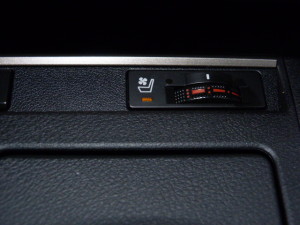

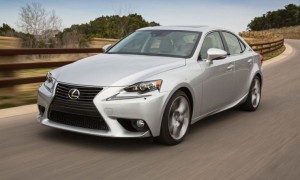
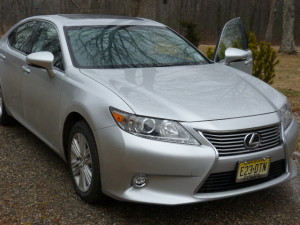
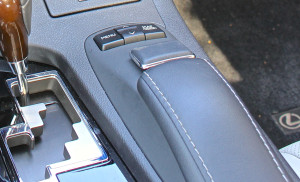







The only buyers who probably would consider buying a Buick La Crosse instead of the ES350 would be the “buy American” die hards. I admire that sentiment, but would buy the Lexus every time. The perceived superior quality and resale value are overwhelming.
One big problem with current Lexuses (or “Lexi” ?) is that unattractive corporate grill treatment. “Distinctive” is not necessarily good when it also means “ugly.” It’s not as hideous as the schnoz that shipwrecked Acuras for half a decade. But I bet it is costing them many sales.
In fact, if I wanted a car with most of the ES350’s virtues, I’d go for it’s close relative; the much better looking Toyota Avalon.
…Or, some buyers probably would consider buying a Buick La Crosse instead of the ES350 because they do not have a Lexus dealership in their town.
That’s a big reason.
I can’t imagine having to make a road trip just to get routine service done. Even If it’s only a half hour drive.
Also, when SHTF, Lexus parts might be hard to come by, or be very pricey. Imports are funny that way. Especially if the tariff/protectionist crowd gets their way. Or, the Dollar sinks like a rock.
The same goes for Toyota parts. …But that’s long term/worst case scenario thinking, who thinks like that? Eh? (Middle aged guys who can afford those cars, maybe?)
Not too mention, if a person didn’t want the whole town to know they could afford, “A Lexus” they might choose a Buick just to tone it down some?
I can’t get it out of my mind how a well-off couple wrote online somewhere (I forget where) about their reason for selling their spiffy new SUV: it drew too much attention and they didn’t want people to think they had something worth stealing.
Not that a new Buick doesn’t say the same thing to criminals in the area,… it’s just that a Buick just doesn’t scream it like a Lexus does. Imho.
Anyway, MikePizzo, you don’t like the schnoz on that car? Anymore, I’m agreeing with eric, they’re all just appliances, the front end of one doesn’t look a whole lot different from the front end of another. They’re all about the same. The only question is, how well do they refrigerate? …Or, bake? …Or, whatever?
Too little axle articulation for me, either way.
Hi Folks,
I recently bought a 2007 Avalon and it’s really the finest car I’ve ever owned in many respects. It has plenty of power, much nicer than my 95 Millenia in every respect. WRT perceived lack of parts…..vs a GM car like a Buick, I doubt that’s a problem. My Avalon was actually assembled in Kentucky and the engine is essentially the same 3.5L V6 one finds in all Avalons and the ES. Parts are easy to come by, if not inexpensive. That’s probably a given for this class of car. I’d worry much more about the future of GM than Toyota. Without the taxpayer bailout, GM would have gone to a well-deserved grave. The combination of Lexus 350 and Avalon sales > Buick LaCrosse sales in the US….as far as performance goes, yesterday when I was driving back to Texas for a visit, I passed a clover with authority and looked down to notice that I had accelerated to 100mph…..it’s pretty easy to do……dayem…….
I second all that Giuseppe –
The Avalon/CamryES – permutations of one great car.
Very hard to beat for comfort/long-haul reliability and resale value.
It’s one of my “recommends” – and has been for years.
Using your appliance analogy, if one actually “works” a lot better than the others, that would be the deciding factor. But if we’re considering the “entry luxury” class of cars, where they ALL work well (except for offering slightly different flavors for the ride/handling compromise) I’d say that styling is THE most important thing. You have to look at it (and be seen in it,) every time you drive it.
If you say they all look about the same to you, I can’t argue with anyone’s subjective opinion. To me though, BMWs have the best fronts, with Mercedes and Infinities in the middle. Audi fronts are homely. And Lexus fronts are the worst by far.
Oh, I forgot to include Acura. Five years ago, their fronts were worse even than today’s Lexus. Now they have evolved to the point where they are slightly less homely than Audis.
Hi Mike,
I have to agree with you on the Lexus front end treatment. It reminds me of a Cyclon centurion from the ’80s Battlestar Galactica.
But from the side, the car looks good. The rear view is not bad, either.
And the interior is very tastefully laid out and appointed.
Eric,
I also agree that the rest of the car looks decent to good. But there’s no making up for that front. They are going to lose sales, and they will quickly understand why it’s happening. Look for a gradual correction of this fault, probably starting next year. They’ll fix that face as fast as they can, without obviously admitting that they screwed it up.
The cars seem to be selling well, and ultimately, that’s the thing that matters. I think the rest of the package is good enough that people will overlook the less-than-beautiful nose – very much as BMW people put up with the Bangle-ized styling that many people mocked when it first appeared. BMW has retreated from that look, of course. But it wasn’t a complete debacle – chiefly because (again) the overall package was still attractive enough that people were willing to overlook/accept that one less-than-ideal aspect.